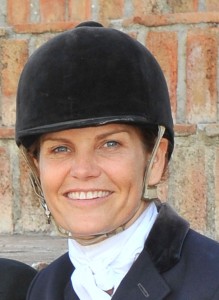News

Conversations From Across the Pond – Adjusting Diets for Your New Horse
2015.12.07
Following SICAB, many Americans find themselves in the process of importing a new horse from Spain Guest contributor Coby Bolger, a long-time equestrian, professional nutritionist and resident of Spain, provides some helpful advice
An equine nutritionist is always at the orders of the rider and the veterinarian of the particular horse in question
Saying that, after 18 years working as an equine nutritionist, coordinating the diets for the top equine competitors in Spain, I have found that it is important to contribute a calming voice of reason in a cacophony of marketing promises that are the reality of today’s horse feed world
Simply put, riders are being inundated with messages that they can greatly increase their horse´s performance by using this or that product They are also being told that certain feedstuffs are “dangerous” and that they are putting their horses at risk
In general, nutritional training for professionals is embarrassingly weak, to the point that most riders do not know how to read or interpret a feed tag in relationship to their horse’s requirements Another problem is that riders do not have easy access to science based, non-commercial nutritional information
As with our own diets, we are becoming knee-jerk reactionists and much prone to commercial manipulation
I am often called to work with riders who have a horse that has been exported from Spain to the United States, Mexico, Colombia, Korea, or other countries in Europe, to ensure a trouble-free adjustment with the new owner My conversations over the years, have been with many different riders who practice every sort of equine discipline
Time and time again, I find myself navigating rider angst and basic nutritional misconceptions
What should riders know about adjusting a diet for a newly acquired horse
When you import a horse, know what the original diet was and try not to make major changes for at least 1 month – If you have a bought a horse, it is because you like him Obviously, I am speaking here about quality horses for competition or breeding, not rescue horses
Part of what you like about the animal, has to do with the work and the diet he received I see riders quickly introduce radical changes to horse’s diets and management, thinking they are doing a better job than what the original rider was doing
Often, there is a big surprise when the horse’s character and way of going changes completely and not in a good way
You need to do a diet evaluation to understand what the horse was eating and look for something similar in your own market It is also beneficial to know how the horse was worked This is where an equine nutritionist can really help
The diet evaluation should include:
- Total amount received
- Did the horse receive cereals, which ones and how much
- Were the cereals cooked or manipulated with heat, soaking or grinding or some other way
- How many times a day did the horse receive a grain ration
- Did he receive a commercial feed product – Which one and how much per day
- Amount, type and quality of the forage
- Did he have straw bedding
- Was he regularly turned out In what size paddock and for how long Was there fresh grass present in the paddock
- How about supplements What did he receive
- Was the diet balanced according to a least NRC or INRA levels
 By Coby Bolger – Equine Nutritionist – Spain
Coby Bolger, originally from Virginia, is the managing director and founder of Horse1, Equine Nutrition Centre in Madrid, Spain Coby spent 5 years in England eventing at an international level, gaining dual Spanish/US citizenship in 1998, winning the Spanish National Eventing Championships in 1999 and 2000 and representing Spain at numerous international events including European Championships and World Equestrian Games Coby continues to ride, write, teach and generally “give back” to the equine world, as any dedicated horseperson would do
By Coby Bolger – Equine Nutritionist – Spain
Coby Bolger, originally from Virginia, is the managing director and founder of Horse1, Equine Nutrition Centre in Madrid, Spain Coby spent 5 years in England eventing at an international level, gaining dual Spanish/US citizenship in 1998, winning the Spanish National Eventing Championships in 1999 and 2000 and representing Spain at numerous international events including European Championships and World Equestrian Games Coby continues to ride, write, teach and generally “give back” to the equine world, as any dedicated horseperson would do
 The association
The association Membership
Membership Breeder services
Breeder services LG Stud Book Services
LG Stud Book Services Dressage Programs
Dressage Programs USPRE High Point Program
USPRE High Point Program Adequan Global Dressage Festival
Adequan Global Dressage Festival Copa USPRE
Copa USPRE USDF All Breeds Program
USDF All Breeds Program Morphology programs
Morphology programs West Coast Andalusian Expo
West Coast Andalusian Expo Washington D.C. Horse Expo
Washington D.C. Horse Expo Feria del Caballo Español
Feria del Caballo Español